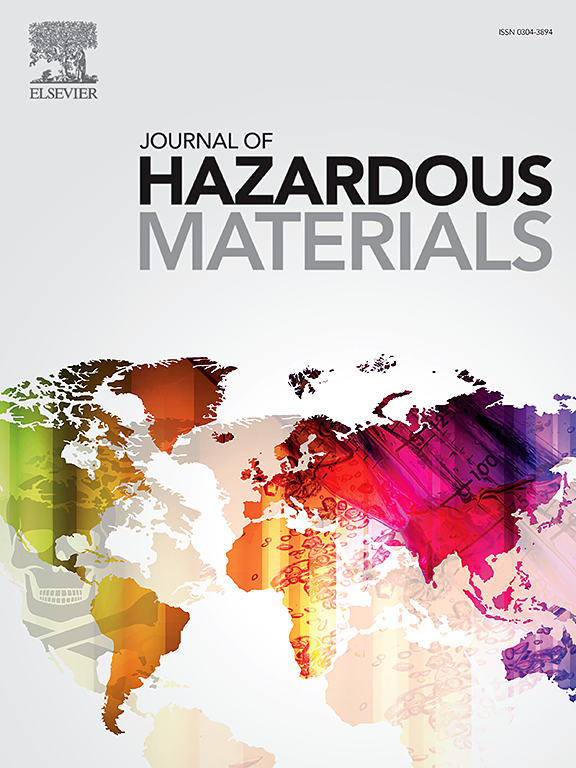揭示FeSx层中硫的种类对硫化纳米零价铁去除铊(I)的影响
IF 11.3
1区 环境科学与生态学
Q1 ENGINEERING, ENVIRONMENTAL
引用次数: 0
摘要
铊是一种对哺乳动物剧毒的污染物,从工业废水中去除铊已成为一项严峻的环境挑战。虽然硫化纳米级零价铁(S-nZVI)被广泛认为是一种有效的重金属吸附剂,但其去除废水中Tl(I)的有效性尚不清楚。本文采用不同的后硫化方法合成了4种S-nZVI样品,并对其Tl(I)去除性能进行了评价和比较。结果表明,S0@nZVI对Tl(I)的去除率在180 min内达到98%,显著高于其他S-nZVI样品(9-15%)。结合经验模型分析(吸附动力学和等温线)、表征(TEM、XRD、Raman和XPS)和对照实验,我们发现S0@nZVI特殊的Tl(I)去除性能归因于其独特的微原电池效应。此外,系统考察了制备条件、吸附剂用量、反应温度、溶液pH和长期稳定性对S0@nZVI法去除Tl(I)的影响。这项工作为设计高性能的去除Tl(I)的S-nZVI提供了有价值的见解。本文章由计算机程序翻译,如有差异,请以英文原文为准。

Unraveling the impact of sulfur species in the FeSx layer on thallium (I) removal by sulfidized nanoscale zero-valent iron
Thallium (Tl) is a highly toxic pollutant to mammals, and its removal from industrial wastewater has emerged as a critical environmental challenge. Although sulfidized nanoscale zero-valent iron (S-nZVI) is widely regarded as an effective adsorbent for heavy metals, its effectiveness in removing Tl(I) from wastewater remains unclear. In this work, four S-nZVI samples were synthesized using different post-sulfidation methods, and their Tl(I) removal performances were evaluated and compared. The results showed that S0@nZVI exhibited a significantly higher Tl(I) removal efficiency (98% within 180 min) than other S-nZVI samples (9-15%). Combining empirical model analyses (adsorption kinetics and isotherms), characterizations (TEM, XRD, Raman, and XPS), and control experiments, we identified that the exceptional Tl(I) removal performance of S0@nZVI was attributed to its unique micro-galvanic cell effect. Furthermore, the effects of preparation conditions, adsorbent dosage, reaction temperature, solution pH, and long-term stability on Tl(I) removal by S0@nZVI were systematically investigated. This work offers valuable insights for the design of high-performance S-nZVI for Tl(I) removal.
求助全文
通过发布文献求助,成功后即可免费获取论文全文。
去求助
来源期刊

Journal of Hazardous Materials
工程技术-工程:环境
CiteScore
25.40
自引率
5.90%
发文量
3059
审稿时长
58 days
期刊介绍:
The Journal of Hazardous Materials serves as a global platform for promoting cutting-edge research in the field of Environmental Science and Engineering. Our publication features a wide range of articles, including full-length research papers, review articles, and perspectives, with the aim of enhancing our understanding of the dangers and risks associated with various materials concerning public health and the environment. It is important to note that the term "environmental contaminants" refers specifically to substances that pose hazardous effects through contamination, while excluding those that do not have such impacts on the environment or human health. Moreover, we emphasize the distinction between wastes and hazardous materials in order to provide further clarity on the scope of the journal. We have a keen interest in exploring specific compounds and microbial agents that have adverse effects on the environment.
 求助内容:
求助内容: 应助结果提醒方式:
应助结果提醒方式:


